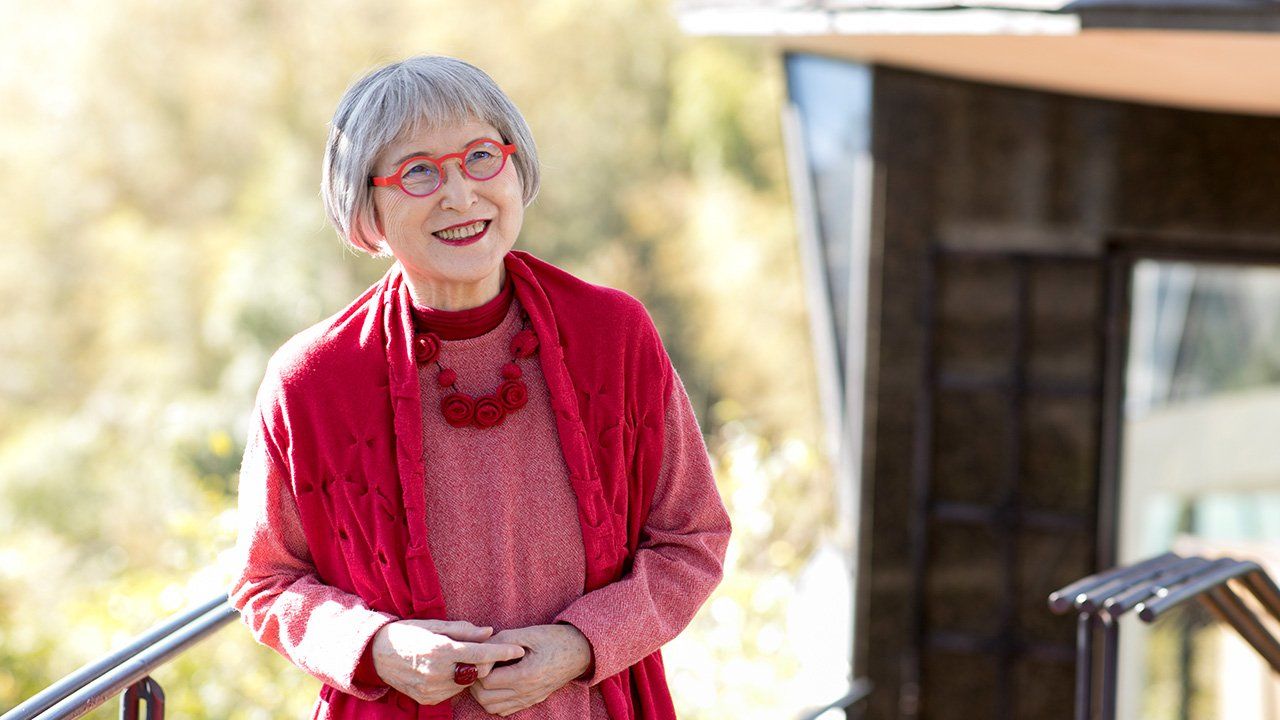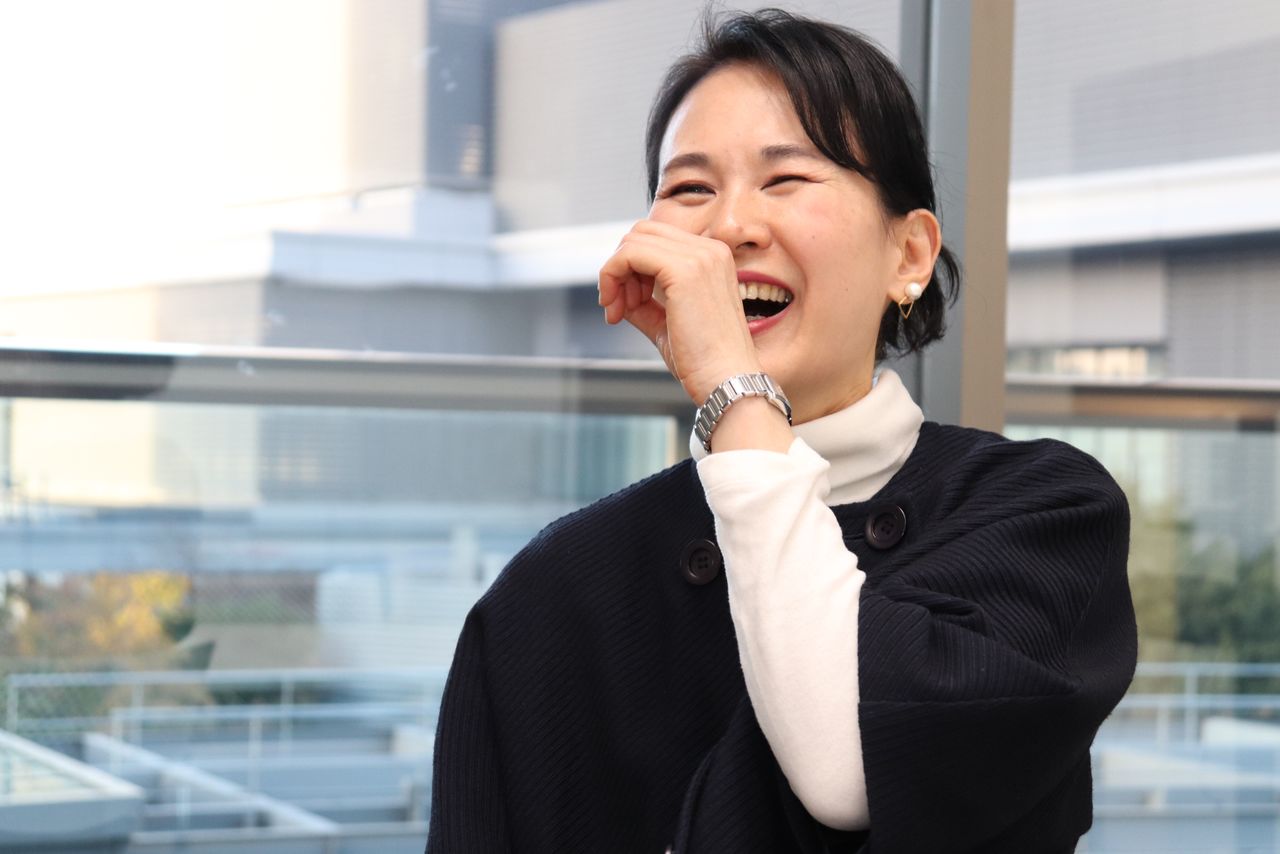
The Real-Life Fairytale of Kadono Eiko Captured in New Documentary
Cinema Culture Entertainment- English
- 日本語
- 简体字
- 繁體字
- Français
- Español
- العربية
- Русский
The television producer Miyagawa Marina has seen considerable success in her career with NHK, and has a busy schedule to match. But when she got the chance to focus on one of Japan’s most beloved children’s book authors, she leapt at it.
The product of this opportunity is a documentary titled Karafuru na majo: Kadono Eiko no monogatari ga umareru kurashi (Colorful Witch: Kadono Eiko Kadono’s Life, Where Her Stories Are Born). It incorporates content filmed for an NHK Educational TV series of the same name, launched in 2020, plus a significant amount of new footage.
The movie centers on Kadono’s home life in Kamakura, Kanagawa Prefecture, and her daily routine of writing followed by an evening walk. She also occasionally travels, encountering new sights and people. The camera follows the spirited and colorful 88-year-old around, recording her reflections on her life and work.

Kadono Eiko writing. (© Kadokawa)
A particularly fascinating episode she relates concerns the two years Kadano spent in Brazil starting in 1959, which sparked her career as a writer. Following her return, she penned her experiences, focusing on the relationship with a family living in the same neighborhood, leading to the publication of her 1970 debut work, Ruijinnyo shōnen, Burajiru o tazunete (Brazil and My Friend Luizinho).
Kadono Eiko’s Appeal as a Subject
Miyagawa Marina also produced the NHK television series on Kadono. Although she has worked on many television programs, this documentary version was her first involvement in filmmaking.
Asked about how the film came about, she recalls vaguely daydreaming about the possibility, but dismissing it as a personal flight of fantasy. From the outset of the TV shooting, though, she did not work with her usual television camera, instead using a 4K camera suited for the big screen. Perhaps she was already under the spell of the “witch.”
“I was filming aimlessly, but in the back of my mind, I thought it would be nice if it ended up as a movie. Kadono is such a lovely person, and expresses her unique worldview in everything, including her clothing and her home. Every aspect of her life is like a picture, and everything she says is so powerful. Filming her is a lot of fun: I doubt that there’s anyone else so rewarding to film. From the beginning, I worked to create something that was different from a regular program and that had a unique feel to it.”
During the second year of the TV show, a producer from the media firm Kadokawa approached Miyagawa about creating a movie. Before she responded, she viewed a documentary on the lives of older female designers and artists from around the world. It was this that clinched her decision.
“Of all of the subjects I’ve worked with, Kadono is especially charming, which gave me a sense of certainty,” says the 30-year NHK veteran. Miyagawa reflects on her career, during which she has interviewed hundreds of people, from celebrities through to folk on the street.
“With Kadono, I find I’m always able to be myself. I never need to go to excess or strive to prove myself. I feel fortunate to work with her as a subject.”
Music that Expressed the Program’s Worldview
Miyagawa recalls being rushed off her feet in her thirties, as she tried to balance work and childraising. She became a producer in her forties, working even more frantically on an ever-changing line-up of popular television programs.
“Suddenly, one day, I realized I was on the verge of fifty. I felt the urge to make a program that focused on a down-to-earth way of living. It was at that time that thoughts of Kadono Eiko entered my mind.”

Kadono’s relationship with her daughter is also explored in the film. Says Rio: “I’ve never read any of my mother’s books.” (© Kadokawa)
She recalled an interview with Kadono that she had once read. “Her moving to Brazil in the 1950s made her seem such a surprising, wonderful figure.” For 10 years, she held the dream to one day interview the author.
“When I actually met her, I found she was far franker than I expected—a typical character from Tokyo’s working-class area. She can be very direct, even harsh, but she never lies. Kadono is truly delightful—she has incredible ability and is a nimble thinker with a playful sense of humor. I recall her chatting on the phone and laughing out loud all the while we were interviewing her.”
As preparations for the TV program began, Miyagawa approached the award-winning composer Fujikura Dai, who is based in London, to see if he could make the theme music. The story of securing his cooperation was an unexpected example of the power of the witch.
“I sent him the link to Kadono’s Instagram account and attached some interviews with her,” she recalls. Apparently he was instantly inspired. The next day, Fujikura sent her a demo track of a piece played on the kalimba, a toylike instrument played with two thumbs. The instant Miyagawa heard it, she felt it perfectly matched the worldview they were trying to portray in the program.

A documentary brimming with the secrets to eternal youth. (© Kadokawa)
This came at a time when they had only just begun filming, and were still groping in the dark. The music’s power helped the cameraman and editor to grasp a shared vision. Even from the opening scenes, on many occasions it felt like the music was leading the way. The cinematic version also uses Fujikura’s music.
The Witch Performs a Miracle for the Movie
Each episode of the program focuses on a different aspect of Kadono’s lifestyle: her food, fashion, travel, and so on. In the process of realizing the film, Miyagawa used some of the previously shot content while also striving to develop an approach that differed from the television program.
“For our documentary, it was essential that the viewer gain an understanding of Kadono Eiko as she truly is. So, I had to view the existing content with a totally fresh perspective.”

Kadono prepares a dish she learned how to make in Brazil. (© Kadokawa)
When it comes to making a movie, it is important to think carefully about what to show across the full runtime. Miyagawa decided the climax of the film should be the opening of Kiki’s Museum of Literature, a new facility in Edogawa, Tokyo, dedicated to Kadono Eiko and children’s literature. The appearance of a special guest for the opening resulted in a moving scene exceeding all expectations. Kadono’s reunion with the boy from Brazil, Luizinho, after 62 years was the perfect touch. This was the magic of the witch.

Kadono’s reunion with Luizinho, the subject of her first book, after 62 years. (© Kadokawa)
“It was actually Kadono who first suggested it,” says Miyagawa. “During our discussions on where we should focus the movie, she suddenly suggested we should invite Luizinho. But we actually didn’t know what had become of him in the intervening years and what sort of person he was now. We managed to get in contact with him and arrange for him to visit Japan, but due to his poor health, we weren’t sure he would make it, right up to the last minute, and I was quite nervous. That’s why I feel like it was really a miracle.”

Luizinho visits Kadono at her home, and the two share their memories. (© Kadokawa)
The reunion of Kadono with Luizinho, whose friendship led to her becoming an author, is a precious moment sure to touch any viewer. It is without a doubt the climax of the film, but even afterwards, when Kadono returns to her regular routine of evening strolls, more fairytale encounters await. Her lifestyle is truly a birthplace of endless stories.
Says Miyagawa: “I made this film as my love letter to Kadono Eiko. I hope everyone has the chance to experience her in full color on the big screen!”
(Originally published in Japanese. Interview and text by Watanabe Reiko. Banner photo © Kadokawa.)
Karafuru na majo: Kadono Eiko no monogatari ga umareru kurashi (Colorful Witch: Eiko Kadono’s Life, Where Her Stories Are Born) (2023)
- Director: Miyagawa Marina
- Running time: 97 minutes
- Official website (in Japanese): https://movies.kadokawa.co.jp/majo_kadono
Trailer
children NHK literature documentary Kadono Eiko Kiki's Delivery Service




